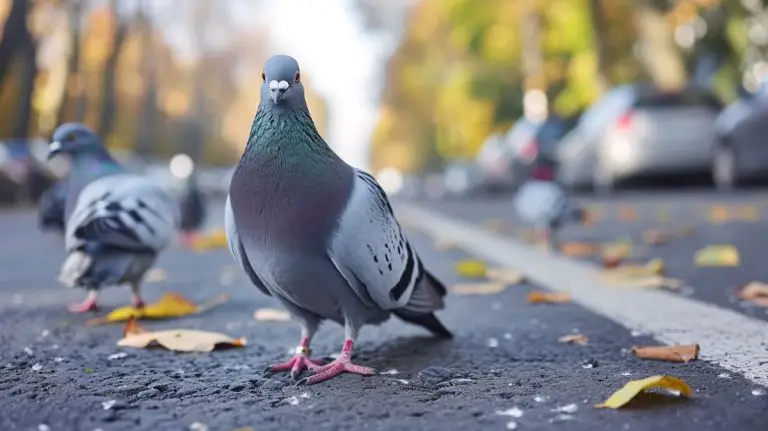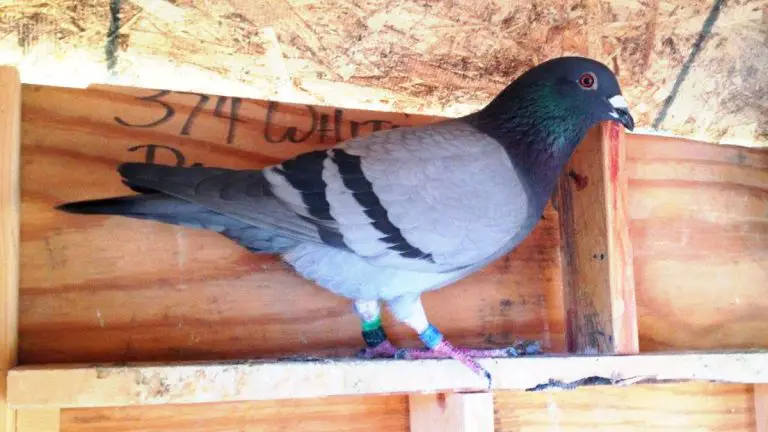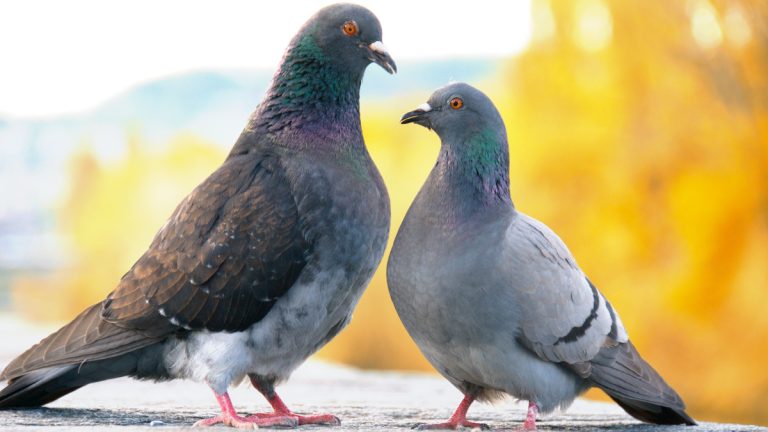How Far Can Pigeons Fly? We Compared 6 Common Breeds
How can a pigeon fly is one of the top questions about the humble pigeon that has captivated the minds of bird enthusiasts, curious minds, and even scientists. If you’re reading this article, you’re also probably looking for answers on how far these birds can fly.
How far can pigeons fly? Pigeons can fly for 600 to 700 miles in a single day. Sometimes, they can travel further than this. The birds are able to cover such impressive distances in a day since they can travel at high speeds of between 50 to 60 miles per hour. There are records of some pigeons flying at even higher speeds of up to 92.5 mph.
This article will explore full details about pigeon flight capabilities and compare the flight capabilities of up to 6 common breeds. We’ll discuss how far these unique birds can fly, what factors influence their flight, and look at some astonishing records set by these birds in their travels.
How Far Can Pigeons Fly?
Pigeons have always demonstrated impressive capabilities when it comes to making long-distance flights. They can fly for impressive distances of between 600 and 700 miles in a single day. Sometimes they can travel even further if their journey gets broken up.
The birds also travel at impressive speeds—50 to 60 mph, on average—this enables them to cover such extended distances in just a day. Surprisingly, some pigeons have been recorded flying at super-speeds of up to 92.5mph!
In ancient times, the homing pigeons were rather slow and would only fly for around 100 miles a day. However, selective breeding over time with a focus on racing glories has led to much faster modern homing pigeons that cover hundreds of miles in a day.

However, it’s important to note that this is a general estimate, and the exact distance the bird covers can vary depending on many factors such as weather conditions, the pigeon breed, training, and individual capabilities.
In an interview conducted by the Guardian, a pigeon fancier by the name Jon Day admits that pigeons can fly up to 700 miles in a single day. He further explains that the homing pigeons “are capable of flying far further if their journeys are broken up.”
The article further explains that the love that homing pigeons feel for their home is so strong that they may even die as they try to return to it.
In 1845, a pigeon owned by the Duke of Wellington was released from Namibia’s coast of Ichaboe Island. It would be later found dead in a gutter in Nine Elms, south London, just a mile from its loft.
Guess, how long it traveled? It covered 5,400 miles in 55 days just to return home!
However, another homing pigeon that traveled from Arras, France to Saigon, Vietnam in 1931 broke this record. This bird covered a distance of 7200 miles (11,600 kilometers) which took 24 days only—making it the longest distance flight for a pigeon. (Source).
Factors Affecting How Far Pigeons Can Fly
The key factors that affect how far pigeons can fly include weather conditions, the pigeon breed, training, navigational skills, and individual capabilities.

The table below shows how the average flight distance of various breeds of pigeons compares:
| Pigeon Breed | Average Flight Distance (miles) in a day | Average Flight Distance (km) in a day |
|---|---|---|
| 1. Homing Pigeon | 600 – 1,000+ miles | 965 – 1,609 km |
| 2. Racing Homer | 500 – 800 miles | 805 – 1,287 km |
| 3. Tippler | 40 – 60 miles | 80 – 100 km |
| 4. Roller Pigeon | About 5 miles | About 8 km |
| 5. High flyers | 2.49 to 4.97 miles | 4-8 km |
| 6. Fantail | Poor flyers | __ |
Certain pigeon breeds such as homing pigeons and racing homers are known to display exceptional flight capabilities. They have been recorded covering exceptional distances of more than 1000 miles (1,600 km) in some areas.
These types of pigeons possess remarkable homing instincts plus navigational skills. This enables them to easily find their way back to their lofts, even when you release them in unfamiliar locations.
As you can see from this homing pigeons and racing homers top the table as the breeds capable of covering the longest distances.
Breeds like tipplers are also bred to participate in endurance competitions. They can fly in both low and high skies and can easily return home from distances between 80 and 100 km.
Rollers can home from about 5 miles only and highflyers who lack homing instincts can only fly from around 4 to 8 km.
As for the fantails, they’re generally poor flyers and the distance they can cover isn’t even comparable to the other common breeds on this table. These birds are usually bulky and prefer being close to the ground. They will only fly from point A to B.
Since they are easy prey for predators, it’s not advisable to let them out to free-fly. These birds are mostly used for ornamental purposes.

Well-trained and healthy pigeons are also likely to cover longer distances in their flights compared to untrained birds (with less endurance and experience) and unhealthy individuals.
Likewise, younger pigeons are likely to fly for longer distances compared to elderly birds whose physical fitness limits their performance.
Still at it, the pigeon’s flying endurance and the distance it can cover are also influenced by wind patterns. Tailwinds will likely boost their flying performance and headwinds will derail their flight.
How Long Can a Pigeon Fly Without Stopping?
A pigeon can fly for up to 13 hours and cover hundreds of miles without stopping. The average distance is 400 to 800 miles of non-stop flight.
This is especially the case for homing racers and homing pigeon breeds, which are the best flyers compared to other breeds of pigeons.

However, how long a pigeon flies without stopping is still influenced by a variety of factors such as the bird breed, environmental conditions, age, health, training, flying experience, and the purpose of flights.
Talking of flight purpose, homing birds will be highly motivated to return to their loft and try covering longer distances without making rests.
How High Can Pigeons Fly?
According to the Pigeon Control Resource Center, pigeons are capable of flying at altitudes of up to 6000 feet (1,828 meters) or more. However, the average flying height is usually between 3000 and 6000 feet.
Pigeons flying at even higher altitudes are usually associated with when these birds encounter thermals and air currents, which enable them to gain altitude. They may also take to higher altitudes during migration or homing pigeon races.

They may also navigate at such higher altitudes when they want to navigate over obstacles like large water bodies or mountains.
That said, the flying height of a pigeon is dependent on a variety of factors such as weather conditions, purpose of flight, air currents, and specific pigeon breeds.
FAQs:
A pigeon can fly between 500 and 800 miles a day, or even more. The exact distance depends on factors such as weather conditions, wind conditions, bird breed, and the individual bird’s training and experience.
Pigeons can take around 4 to 5 hours to fly 100 miles, assuming the conditions are favorable. However, the flight duration can vary based on factors like the wind direction, weather conditions, and the individual bird’s fitness and experience.
Conclusion
Pigeons are generally remarkable flyers and can easily cover hundreds of miles, between 500 and 800 miles, in a single day. Some birds can cover even longer distances. The distance these birds can fly is usually influenced by several factors such as the pigeon breed, weather conditions, training, individual birds training, navigational skills, and experience.
Homing pigeons and racing homers score highly for long-distance flights compared to other common breeds like rollers, tipplers, and highflyers. These birds can fly at high speeds of between 50 and 60 mph or faster and have strong homing instincts, which enable them to cover such impressive distances in a day.






